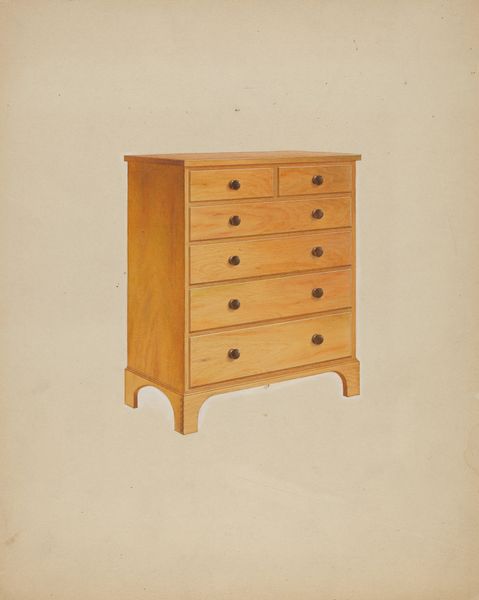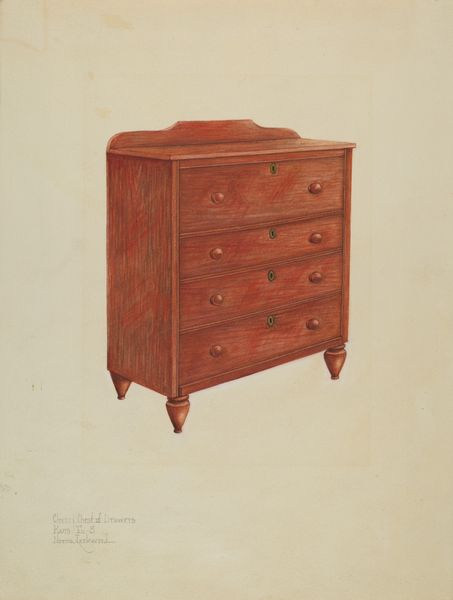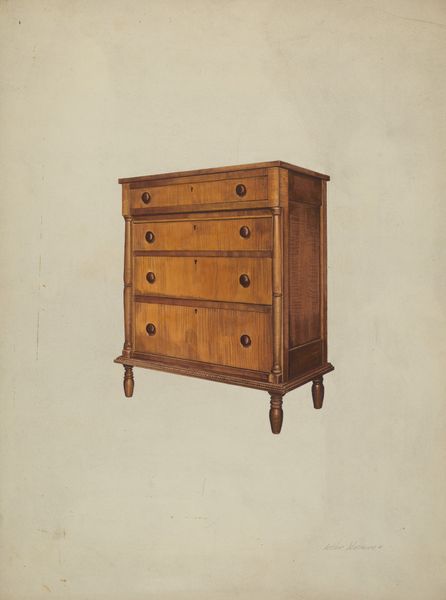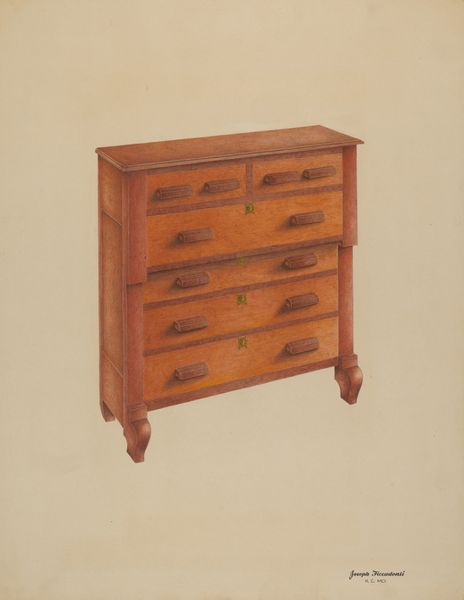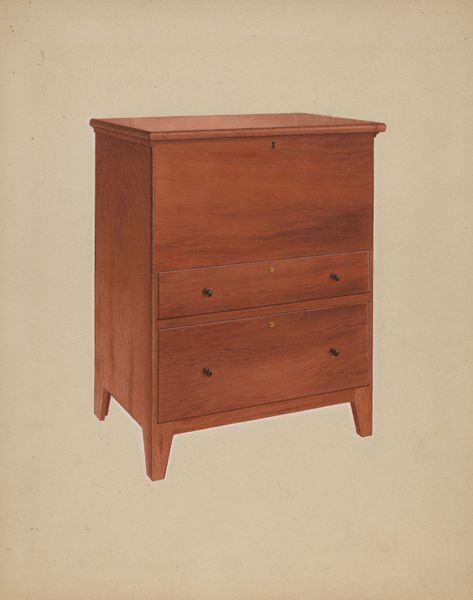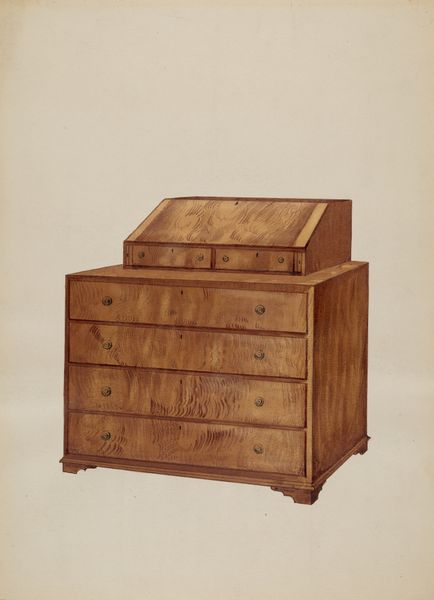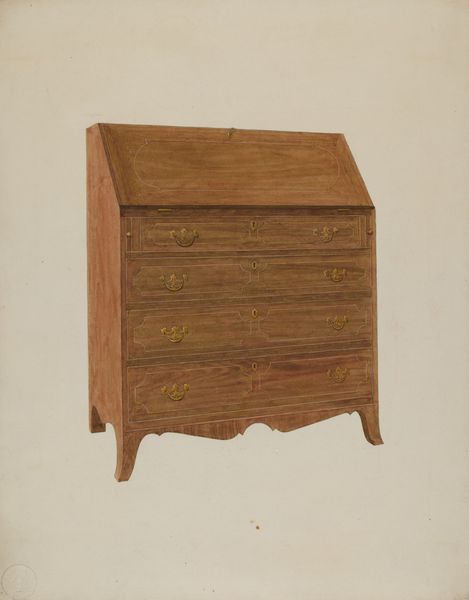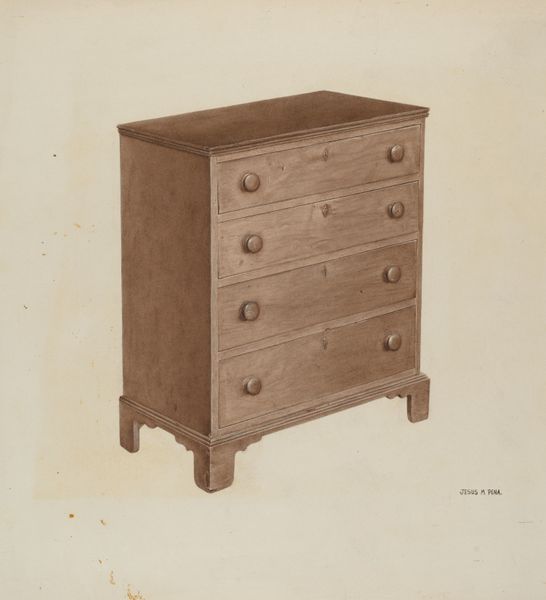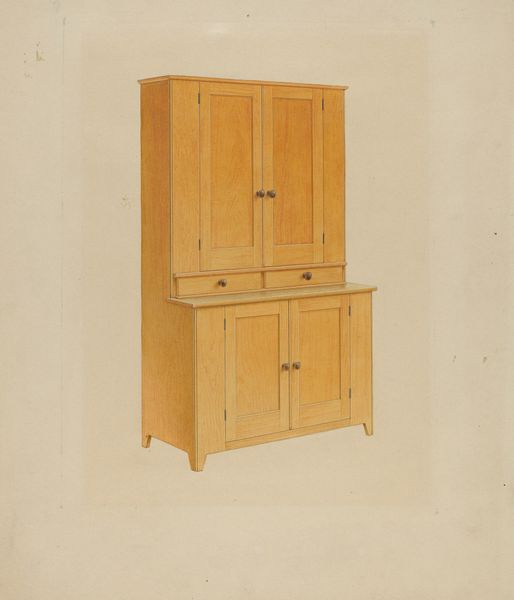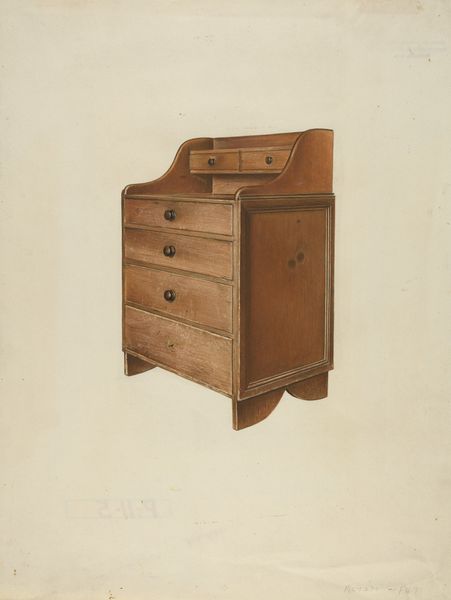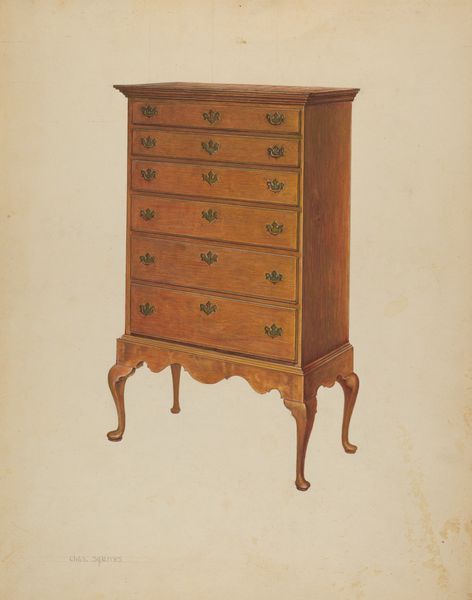
drawing, pencil
#
drawing
#
pencil
#
modernism
#
realism
Dimensions: overall: 27.9 x 22.8 cm (11 x 9 in.) Original IAD Object: 42 1/2" high; 37 3/4" wide; 18" deep
Copyright: National Gallery of Art: CC0 1.0
Editor: We’re looking at Winslow Rich's "Shaker Chest of Drawers" from 1937, a pencil drawing. There’s a simplicity to it that's quite striking. How do you read this work? Curator: Indeed. Focus first on the clarity of line. Rich's meticulous pencil work delineates form with unwavering precision. Observe how each drawer, each plane, adheres to a rigid geometry, a testament to Shaker design principles. It favors functionality above all. What about the composition draws your attention? Editor: I notice how the drawer pulls disrupt the otherwise very linear structure. Is there any importance to the drawer-pull shapes? Curator: Note that they are the only prominent curve in the image. They punctuate the austerity of the whole. Consider how their spherical form softens the orthogonal rigidity. Further, their placement provides an almost musical rhythm, spaced evenly on the vertical axis, which lends an aesthetic appeal within its structural logic. How does the artist balance those seemingly opposed priorities of practicality and style, line and curve? Editor: So, is it meant to demonstrate that beauty and utility are not opposed? The subject here seems carefully chosen, but portrayed with simple style and form. Curator: Precisely. And consider the medium itself. A pencil drawing lends a delicacy to the robust carpentry suggested. Is it possible that this portrayal softens the "masculine" trade for aesthetic contemplation? This choice transforms a practical object into a subject worthy of artistic study, thereby raising a craft to art. Editor: I see that transformation now. This reminds me to consider not just the subject of a work but also the artistic decisions that elevate it. Curator: Precisely. Recognizing those structural choices will unlock any piece.
Comments
No comments
Be the first to comment and join the conversation on the ultimate creative platform.
